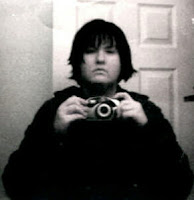 |
| Cherokee Nation at Kansas City, 1994 |
As a anthropologist, I maintain a certain outlook from multicultural perspective but I have found it fails me when working with more traditional native american individuals. Often I am met with hostility which I believe is less to do with how I look, as some might presume, and more to do with the socioeconomics of tribal living. I certainly don't intend to be a bother and the only community I intend to pursue citizenship with would be the Metis peoples in my local Canadian/US sector. Due to the degree of mixture it simply seems idiotic to sequester anything more specific when indeed I am not specific.
It is that mixture exactly that is the true topic of this post. After my 3rd party transfer to Family Tree DNA completed I uploaded it into GED Matches album to compare with ancestry original interpretation. It is notable to mention that ftdna actually reevaluated the chip itself not just the raw composite to my knowledge. For the most part I saw predictable and minute changes. Side by side I noticed that ftdna cited more africanized Moorish DNA as apart of my Iberian spectrum. When I reviewed MDLP 22 by chromosome it suddenly occurred to me to class out the asian decent populations and revise it for my native american blood. Trycyclic populations including the middle east are often misplaced amounts of plains native which is so intermixed that it more often registers as middle eastern.
On average I found that 20% of each chromosome was Asiatic derivative. Since the middle eastern connection is still debatable I also went a step further in removing the trycyclic and Asian components to search for individualized known samples of native american DNA. On average this left a 10-12% of each chromosome to be confirmed native american source which is above the threshold for founder markers. Each of the remaining populations confirmed in my chromosomes were set in known genetic regions allowing me to percentage out the confirmed strains by region. Of the 10-12% confirmed; 53% was Northern Hemisphere (Inuit derivatives), 38% was Americas proper, & 21% was trace matching aboriginal societies in the eastern hemisphere. Percentage peaks for the northern group rested on chromosomes 7, 16, 18 & 22. The Americas group peaked at 13 & 20, but only 20 was highly above the margin of error. Lastly the trace societies were highest peaked on 8 & 15 but not as impressively as the other groups. Overall it was North Amerindian which received the highest proportion spikes but it was also one of the least spread matches across the 22 chromosomes.
On average I found that 20% of each chromosome was Asiatic derivative. Since the middle eastern connection is still debatable I also went a step further in removing the trycyclic and Asian components to search for individualized known samples of native american DNA. On average this left a 10-12% of each chromosome to be confirmed native american source which is above the threshold for founder markers. Each of the remaining populations confirmed in my chromosomes were set in known genetic regions allowing me to percentage out the confirmed strains by region. Of the 10-12% confirmed; 53% was Northern Hemisphere (Inuit derivatives), 38% was Americas proper, & 21% was trace matching aboriginal societies in the eastern hemisphere. Percentage peaks for the northern group rested on chromosomes 7, 16, 18 & 22. The Americas group peaked at 13 & 20, but only 20 was highly above the margin of error. Lastly the trace societies were highest peaked on 8 & 15 but not as impressively as the other groups. Overall it was North Amerindian which received the highest proportion spikes but it was also one of the least spread matches across the 22 chromosomes.
So I may be lucky enough to have numbers but it also comes down to personal experience and identity. Personal experience has always pushed me to look at aboriginal life in a learning capacity much like a child watching their parents. Even now I am writing my final paper for my degree program on Native American Studies. The expectations of that work is for me to be a participant but I've always been a participant even in times where I was so far away from the source. Part of my most loving experience was the short time I spent with the Cherokee Nation in Missouri. Despite outward appearance I was drawn in and allowed to participate culminating in a honorary membership. While it may have just been words it started me off on a journey I am still following now, as a Metis.










